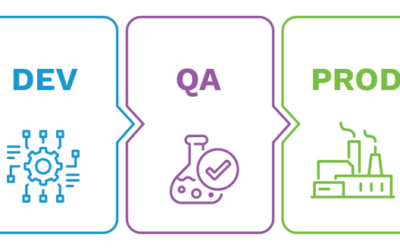IT Priorities: Forget Cost-Cutting, Improve Business Processes
How can IT leaders successfully address critical new priorities, while keeping costs under control? Here are three key initiatives to consider.
Okay, “forget cost cutting” may be a bit strong (costs always matter!), but — according to recent research from McKinsey, reducing costs is no longer the top priority for IT organizations.
As Joe McKendrick reported, writing about the study in InformationWeek, “improving the effectiveness of business processes is the top-ranked IT concern at organizations, up from 47% in 2011 to 61% today. Reducing IT costs has dropped in priority, from 44% to 31%.”
The good news in the study, along with reduced focus on cost-cutting, is that IT budgets are generally on the rise. The bad news is that expectations are being set higher, and IT leaders themselves are often their own harshest critics.
The study predicts that infrastructure costs will decline as a proportion of IT budgets due to greater use of cloud computing, and that over the next few years, “the most acute needs for IT talent are in analytics, joint business and IT expertise (e.g., enterprise architects), and mobile and online skills.”
Tips for IT management
So how can IT leaders successfully address these new priorities, while keeping costs under control? Here are three key initiatives to consider:
1) Implement enterprise request management (ERM) to help manage cloud services provisioning.
As noted here previously, the ERM approach — which combines an intuitive, centralized portal interface for requesting any type of enterprise service or resource with a back-end process automation engine — closely parallels Forrester’s recommendations for it provisioning cloud services to developers. “IT infrastructure and operations specialists can take control of cloud management, but need to first change their focus and then prove their value, implementing the right tools and processes to take the cloud management burden off developers.”
2) Leverage interface engine and workflow automation software to create online interfaces to legacy management systems.
Forrester refers to this as building mobile / Web-based “systems of engagement” that integrate with core, in-place “systems of record.” Business users get transparent anytime / anywhere / any-device access to the information they need, even if that data resides in different enterprise or departmental management applications or databases. IT keeps costs under control by extending the value of systems in which the organization has already invested considerable expense and training.
3) Empower business process owners to automate and optimize their own task workflows.
Giving business managers graphical tools to automate, test, refine, and deploy their own automated processes, with minimal IT assistance, benefits both those managers (greater control, faster service creation) and IT (reduced development time, increased responsiveness to business needs).
A final & important tip
Finally, don’t wait for big projects to be completed before making improvements. Look for opportunities to make incremental improvements today. Business needs expand and change far too quickly to put off process enhancements while making decisions about or implementing major new systems.
In some cases, using the systems-of-engagement-atop-systems-of-record approach will extend the life of core in-place systems. In other situations, making the considerable investment of time and dollars to implement new management-and-control systems may be the best path.
But in either case, use tools that support common communication protocols (API’s, Web Services, SOAP, REST, etc.) — and therefore will work with the core enterprise software you have in place today, as well as whatever you may have in place tomorrow — to automate, accelerate, and improve business processes now. Moving the business forward is always a top priority.
Next steps:
- Download the white paper Business Process Automation Anywhere and Everywhere.
- Join the discussion in the Enterprise Request Management group on LinkedIn.
- Contact Kinetic Data to talk about your business process automation challenges.



